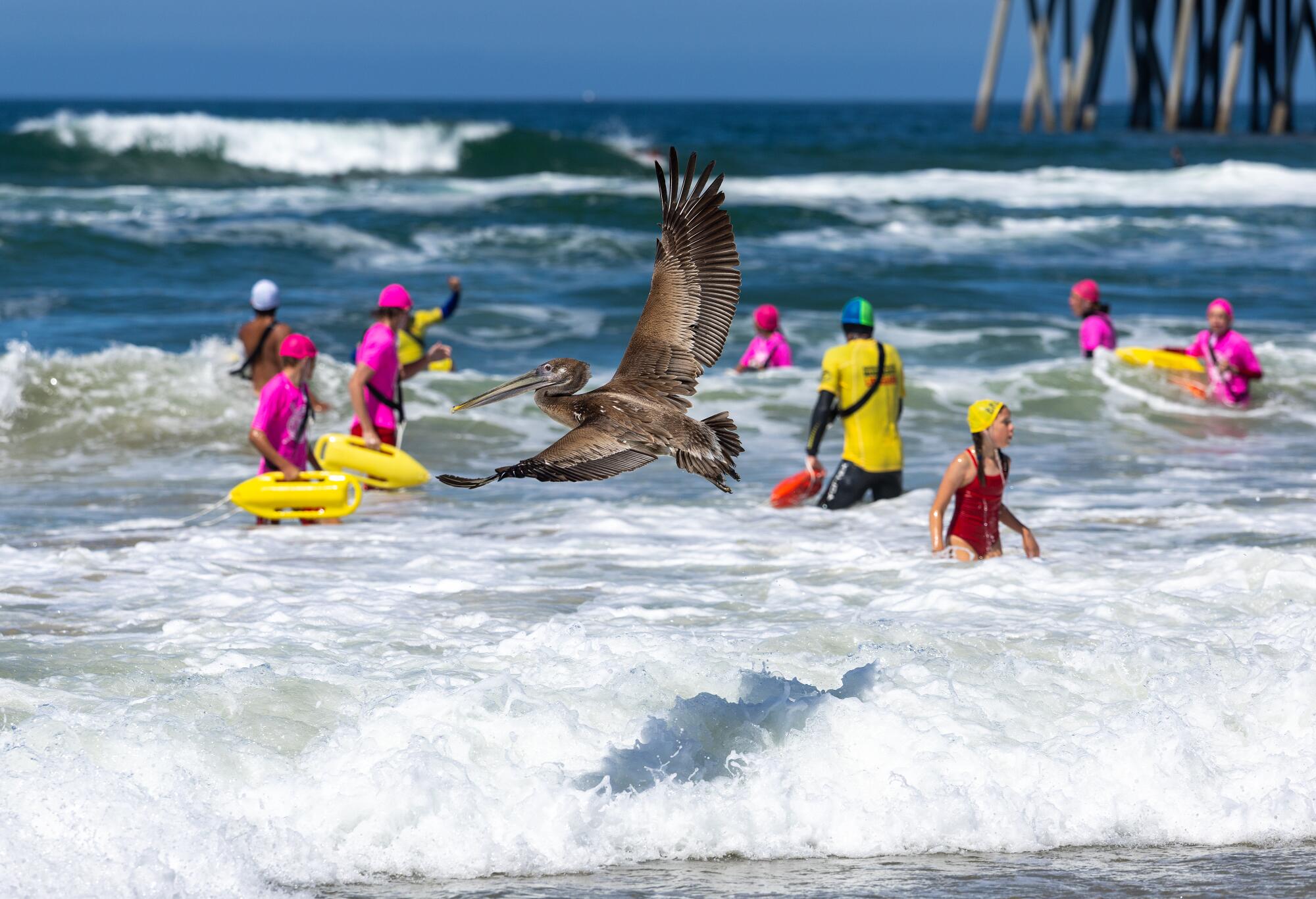Poisonous pelicans also fly deadly deadly algal blooms

The flock of brown pelican returned to the wild on Wednesday morning, survivors in the recent algal Bloom. This year’s bloom was such a serious event since 2015, where thousands of animals die near the sea from Central California to Alaska.
This year’s bloom, the start of January, the 13 other seabags began to poison the region, including seawater sometimes threatening beaches. Pelicans took Wednesday to perform a full recovery at a wild care center in Huntington Beach.
One of the pelicans renovated by Huntington Beach Pier.
(Allen J. Schaben / Los Angeles Times)
Release was just held in southern Pier, and members of the community were notified to look.
“This is always a special time – not just in our group and volunteer volunteers to save these birds, the public,” looking after the wild borizontal. ”
Huntington Beach Junior Liffeirds in the event, according to news issuers from the center, removes coastal cages to allow birds to produce the beach.

Junior’s living workers participated in the swim of Pier as birds are released on Wednesday.
(Allen J. Schaben / Los Angeles Times)
The event was very effective, according to Jaratt Dazey, a voluntary consultant for a group of wild animals. After the birds were released, most of them flee – but two continued on the sand. Two were returned to the central centers to find additional treatment, Dazey said.
“However, the release went well,” he said. They went out of cages, and they stayed in the sand for a few minutes, and they all left them together. ”
13 pelicans were removed from the Domoic acid, toxin that occurred in Algal Blooms, a fish that can eat. Sea animals can be toxins when they eat dirty fish, causing irregular behavior and taking, Dazy says.

Birds released on Wednesday is between 200 treated for a wild care center and Wildlife in Huntington Beach during the latest algal bloom.
(Allen J. Schaben / Los Angeles Times)
The fourth year is the risky bloom that happened in Southern California, but this year, it was especially threatening, as the powers of Los Angeles were previously reported.
The number of lions in the sea without criticneless sea, and one cohesion that meets her “feral, about demons.” The Rin Mammal Care Center in San Pedro reported at the end of the end of the end of the end of the “daunting, poisonous blossom, and fatalities we have seen.”
The Wetlands Care Center and Wildlife increased approximately 200 marshes, the main dazey.
The Algae levels are toxic on the southern coast of California and started to go down early June.
The poisonous algaoms can be caused by the water patterns and air nutrients and nutrients, can “be overthrow” the algae colonies and lead to grow out of control, according to the National Sea Service.
The effects of climate change can make algal blooms frequently and are worse, according to the US Environmental Environmental Protection Agency. Warm temperatures and high levels of carbon dioxide levels make a perfect place to breeding algae. Various rainy and sides of the sea side of the sea leads in nutritious waters, which only promotes algae.



